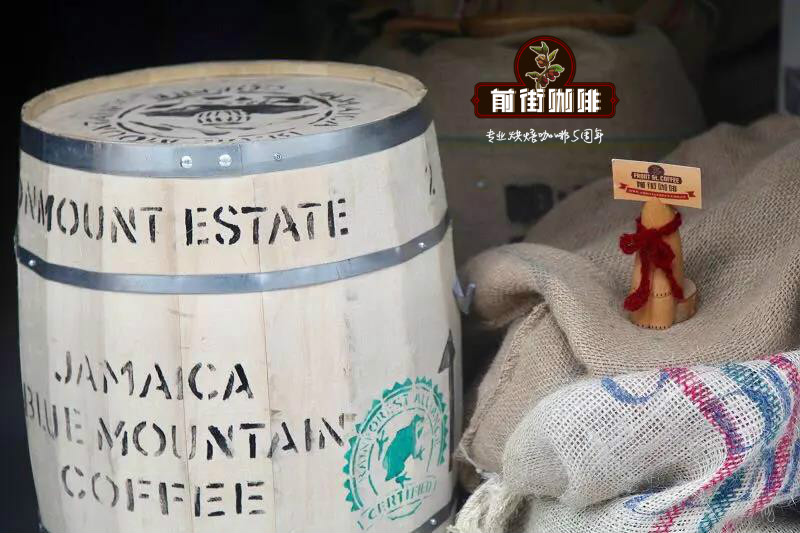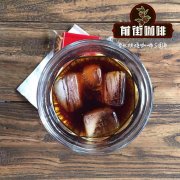Introduction to the Origin of Ecuadorian Coffee production area description of the taste and flavor of Ecuadorian coffee

Professional coffee knowledge exchange more coffee bean information please follow the coffee workshop (Wechat official account cafe_style)
Ecuador has great potential to produce coffee with exotic flavor, and its quality is also recommended. However, the biggest problem at present is production. Ecuador's annual coffee exports are only 100 containers (1 container = 40,000 pounds) of washed Arabica coffee. A coffee merchant imports more than 100 containers of coffee a year, while the rest of Ecuadorian coffee is poor quality sun beans and robusta coffee. Supply to the huge instant coffee market at home and abroad. Present the above phenomena in a table:
Coffee exports from producing countries / year (container statistics)
Colombia / 32000
Peru / 12000
Bolivia / 3000
Ecuador / 100
The coffee comes from a small organization located on the southern border of Ecuador and Peru and belongs to a larger group that has won high rankings and first prizes in Taz Dorada competitions many times because of its top leadership and one of the best positions in Ecuador's coffee market.
Coffee farmers in the region still grow traditional varieties of coffee, such as Tibika, Katura and bourbon, which is also the key to their success. Leaf rust has always been the biggest headache for these coffee farmers, coupled with the relationship between organic certification, which greatly limits the products that can be used to deal with leaf rust, making the problem even more difficult.
The climate of this area has its own style, very special, humid throughout the year, the temperature change is suitable, about 12-28 degrees Celsius, the average temperature of 20 degrees, such a climate is very suitable for growing coffee, which is also reflected in the flavor of coffee.
Coffee farmers in southern Ecuador own an average of 1.5 hectares of small farms per person, while there are more large farms in the north
Most southern farms are organic and produce a wide variety of products, including flowers, corn, kale, bananas, bees, cattle, fish, fruit and coffee. At present, the most difficult challenge for coffee farmers is leaf embroidery disease, which has reduced Colombia's coffee production by 50% in recent years. The easiest way to eliminate leaf embroidery disease is to use chemicals, but coffee farmers treat it in an organic but difficult way for the sake of environmental protection; in addition, in Ecuador, there is a lack of plant nutrients due to lack of fertilization. this also affects the quality of coffee and the growth of coffee inner shell and raw beans.
The farms in the north are large, with an average of 15 hectares or more, cultivated with traditional fertilizers and fully developed; the area is lush and very humid, coupled with warm summers, and the conditions are perfect for growing coffee; it is a very interesting place with ancient local aboriginal graveyards, vineyards and experimental farms run by NESPRESSO.
Origin: Ecuador
Production area: Erzamora-Chinchipe province, Zumba city
Farm: multiple small coffee farmers
Ecuadorian coffee variety: Arabica
Ecuadorian coffee: 1300-1900 m above sea level
Ecuadorian coffee raw bean treatment: washing and drying in the sun on the farm
Ecuadorian coffee flavor
"toffee and walnut flavor with citrus acid."
Important Notice :
前街咖啡 FrontStreet Coffee has moved to new addredd:
FrontStreet Coffee Address: 315,Donghua East Road,GuangZhou
Tel:020 38364473
- Prev

Processing methods of characteristic flavor and taste of coffee beans in Guanacaster, Costa Rica
Professional Coffee knowledge Exchange more information on coffee beans Please follow Coffee Workshop (official Wechat account cafe_style) Guanacaster Nature Reserve is an important natural habitat that maintains biological diversity, including the best dryland forest habitats, biological communities from Central America to northern Mexico and major endangered plants and animals. The land and sea of this place
- Next

Output, Grade and quality of Coffee beans in Brazilian Coffee producing areas
Professional coffee knowledge exchange more coffee bean information please follow the coffee workshop (Wechat official account cafe_style) Brazil has more than 300000 coffee farmers in eleven states (Brazil is a large country, like the United States, districts are divided by states) to grow 2,200,000 hectares of coffee, the following is a summary of the main producing areas and production: Minas is located in the south of the country and is born in Brazil.
Related
- Does Rose Summer choose Blue, Green or Red? Detailed explanation of Rose Summer Coffee plots and Classification in Panamanian Jade Manor
- What is the difference between the origin, producing area, processing plant, cooperative and manor of coffee beans?
- How fine does the espresso powder fit? how to grind the espresso?
- Sca coffee roasting degree color card coffee roasting degree 8 roasting color values what do you mean?
- The practice of lattes: how to make lattes at home
- Introduction to Indonesian Fine Coffee beans-- Java Coffee producing area of Indonesian Arabica Coffee
- How much will the flavor of light and medium roasted rose summer be expressed? What baking level is rose summer suitable for?
- Introduction to the characteristics of washing, sun-drying or wet-planing coffee commonly used in Mantenin, Indonesia
- Price characteristics of Arabica Coffee Bean Starbucks introduction to Manning Coffee Bean Taste producing area Variety Manor
- What is the authentic Yega flavor? What are the flavor characteristics of the really excellent Yejasuffi coffee beans?

